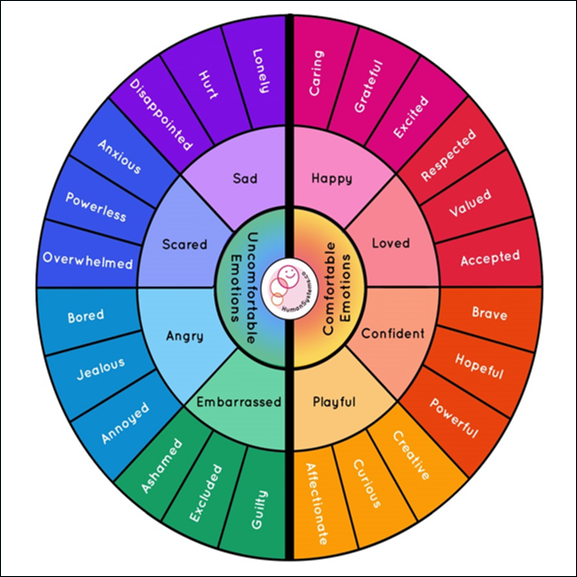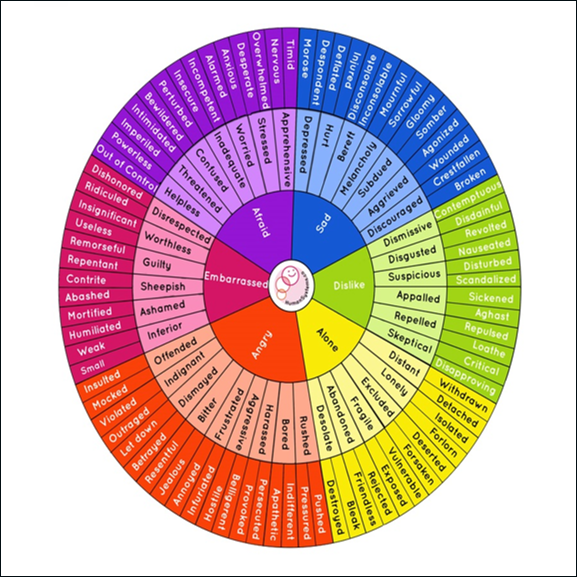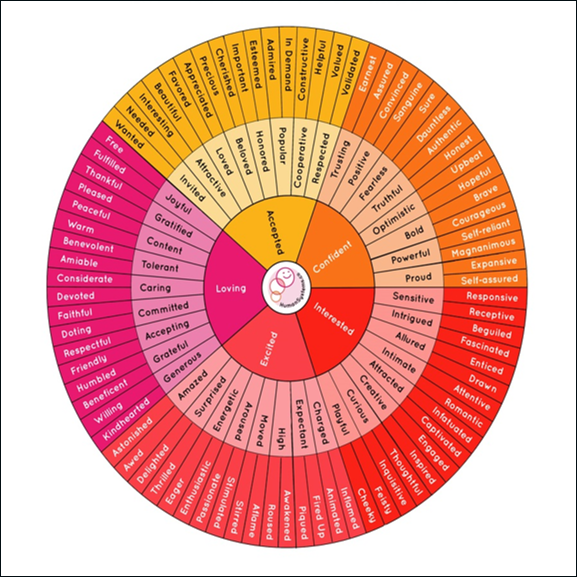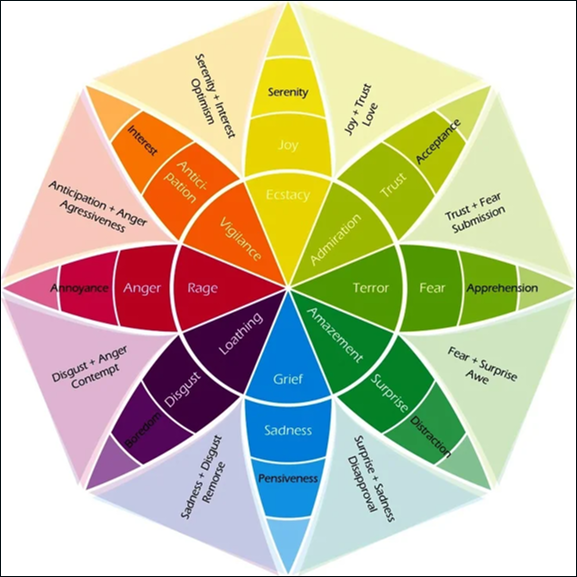By Brian Fox, SourcePoint Caregiver Program Coordinator

Have you ever thought about how funny it is that in the English language the word ‘fly’ is both a noun and a verb? How some keys open locks while others could get you kicked out of an orchestra? Or how technically every bear has bare hands? Horrible jokes aside, isn’t it also a bit strange how we have dozens of interchangeable, multisyllabic words for elementary concepts like happy and sad? Possibly strangest yet of all though is how some of those words that are functionally identical in definition can call to mind vastly different states of being. Don’t ask me how but pensiveness looks like a different kind of sadness than despondence. Exuberance and delight are somehow different versions of happiness, too. One person can be earnest and another person can be authentic but both individuals display confidence, just in slightly different ways. Hmmm… actually, I think I had better just show you the diagram before I start to confuse myself.

This is one of many variations of what’s known as “The Emotion Wheel.” This tool for people of all ages, originally developed in 1980 by psychologist Robert Plutchik, is used to this day by many social workers, school intervention specialists, and therapists. I make frequent reference to it in caregiver support groups, where topics of discussion often involve identifying and managing not only our own emotions but those of our care receivers as well. There is power in being able to name and compartmentalize something that was once too abstract.
With most things, it’s probably best to start with the general and work our way toward the specific. It may not always or ever be necessary, but for individuals who might be working through some potent emotions, there are also expanded wheels with a greater number of spokes, covering the whole spectrum of human emotion—both “good” and “bad.”

Pictured on this third wheel, you see the expanded emotion wheel for concepts like Afraid, Dislike, Embarrassed, etc. Understanding where these feelings come from is a necessary step in communicating to those in our lives what internal and external factors might be affecting us.
While it is believed that supposed negative emotions are harder to govern than things like happiness and excitement, they can give us a lot more direction in some situations if we can understand their source as well, potentially delaying gratification or making more calculated risks if these emotions have been known to lead an individual astray at times.

By far my favorite application of the emotion wheel is the ability to sort out bittersweet or compounded emotions as well. This is especially helpful in my grief workshop, Thinking Beyond the 5 Stages where participants attempt to get comfortable with fond memories that are now also painful — embracing the full human spectrum of emotion
If you have been grappling with some complex feelings related to caregiving or grief or both, please find some time to call me or drop by so we can find the right group, activity, or tool. Oh, and if this sort of thing interests you, please check out some of my previous writing on the importance of social-emotional growth, Where is your “Third Place.”

Support groups, free classes and workshops, and one-on-one consultations are available for family caregivers of any age who live in Delaware County, as well as those who are caring for a loved one who lives in the county. To learn more visit MySourcePoint.org/caregiver. Or schedule a private discussion with Caregiver Program Coordinator, Brian Fox. Brian can be reached by e-mail at bfox@MySourcePoint.org or by phone at 740-203-2399.

